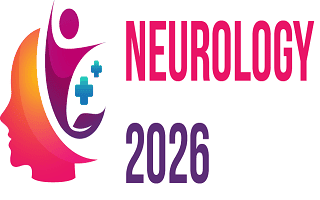4th International Conference on
Neurology & Neurological Disorders
October 15-16, 2026 | Paris, France

Neurology 2026

S Nijalingappa Medical College, India
Abstract:
Background:
Epidural hematoma (EDH) is a neurosurgical emergency requiring rapid diagnosis and intervention. While the “lucid interval” is a classic feature, many patients may deteriorate rapidly even after an initially stable presentation. Tuberous sclerosis complex (TSC), a neurocutaneous disorder, may further complicate neurological outcomes due to underlying cortical irritability. We present a rare case of rapidly expanding EDH in a known case of TSC, complicated by seizure and aspiration, emphasizing the importance of vigilant observation and timely intervention.
Case Presentation:
A 16-year-old male with a known history of tuberous sclerosis presented following minor head trauma sustained in a road traffic accident. Initial evaluation revealed a Glasgow Coma Scale(GCS) score of 12/15 and a small right temporoparietal EDH (12 cc) on CT scan. Four hourslater, the patient experienced a generalized tonic-clonic seizure, complicated by tongue biting and aspiration, requiring emergency intubation. A repeat CT showed hematoma expansion to 140 cc. The patient underwent emergency craniotomy and hematoma evacuation. Postoperatively, he was managed in the ICU with seizure prophylaxis (levetiracetam), mannitol for raised intracranial pressure, and supportive care. His recovery included successful extubation, progressive neurological improvement, and structured neurorehabilitation. Levetiracetam was discontinued after 6 months following seizure-free follow-up and normal imaging.
Conclusions:
This case highlights the potential for catastrophic neurological decline in patients with seemingly minor head trauma, especially those with pre-existing conditions like TSC. The initial lucid interval followed by rapid deterioration due to EDH expansion underscores the need for early repeat imaging in high-risk patients. Prompt airway protection, seizure management, and surgical intervention are critical to favorable outcomes. This report reinforces the importance of clinical vigilance and personalized care pathways in managing head injuries with underlying neurocutaneous disorders.
Biography:
Sai Prasad is a dedicated medical student currently in his final year (MS4) of medical school, driven by a deep passion for advancing healthcare and contributing to cutting-edge research. As a USMLE aspirant, he is committed to pursuing a career that blends clinical excellence with scientific innovation. With certifications in ACLS, PALS, and BLS, Sai is well-equipped to handle critical clinical situations and is devoted to providing high-quality patient care. His core interests lie in Radiation Oncology and Internal Medicine, where he aspires to make a meaningful impact through both compassionate care and research-driven practice. Sai's journey is fueled by curiosity, resilience, and a vision to be part of transformative change in medicine.
